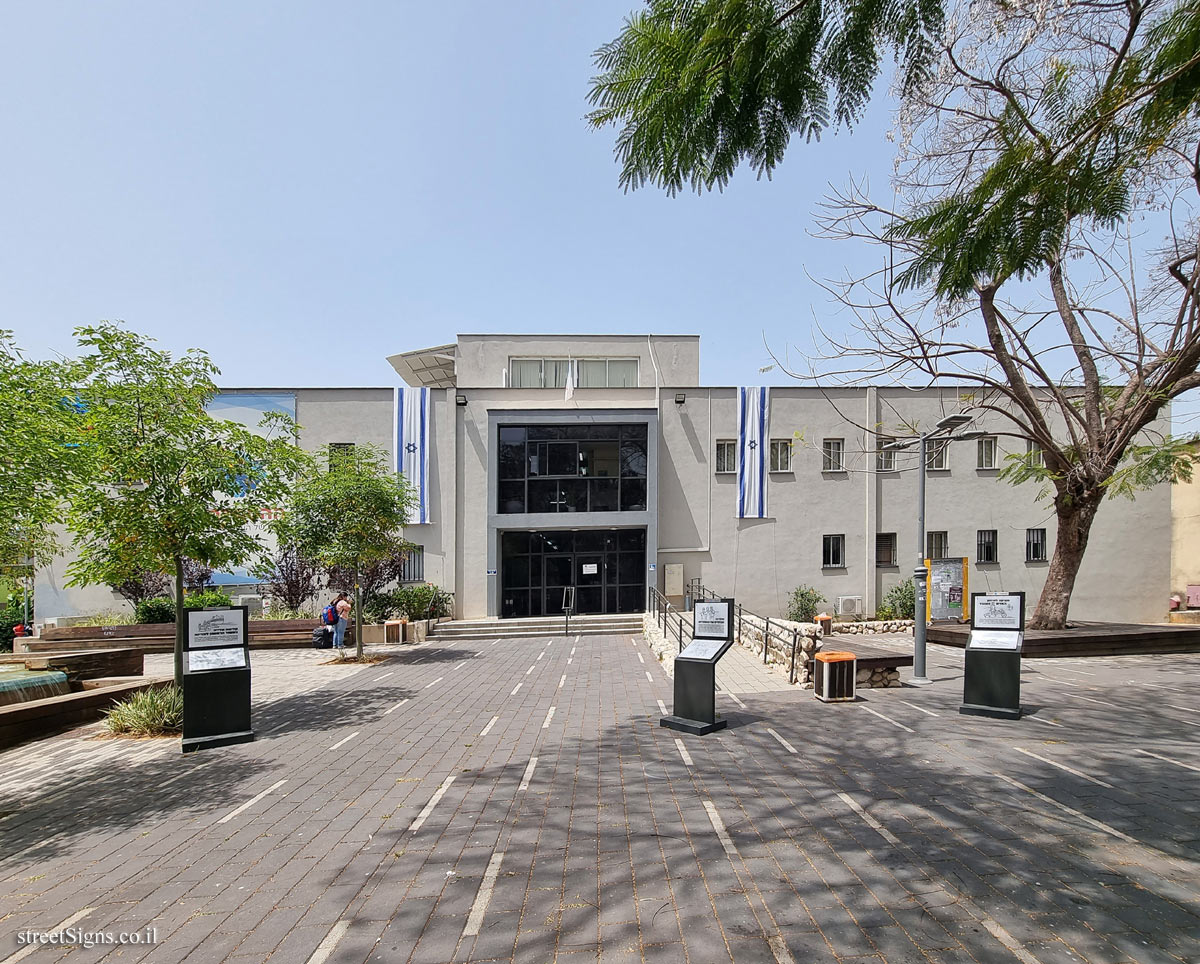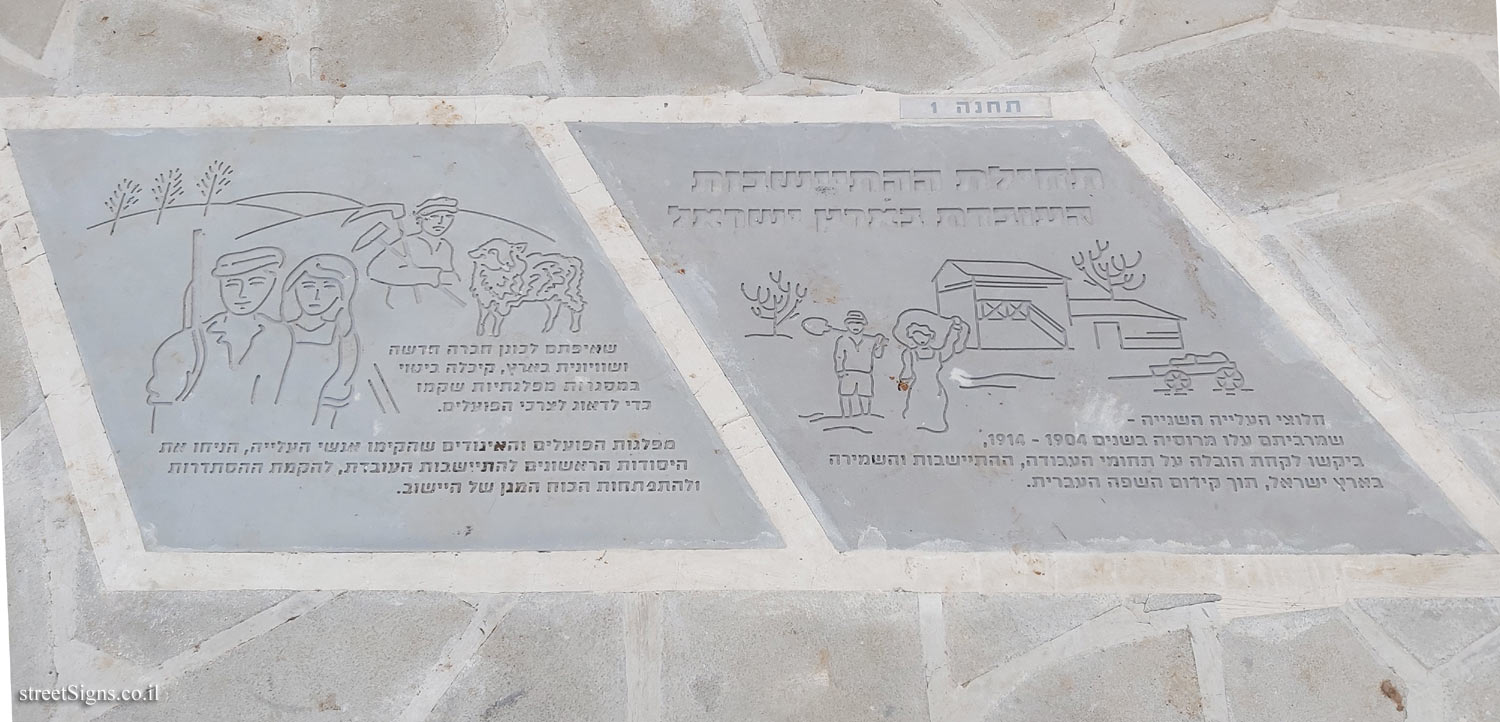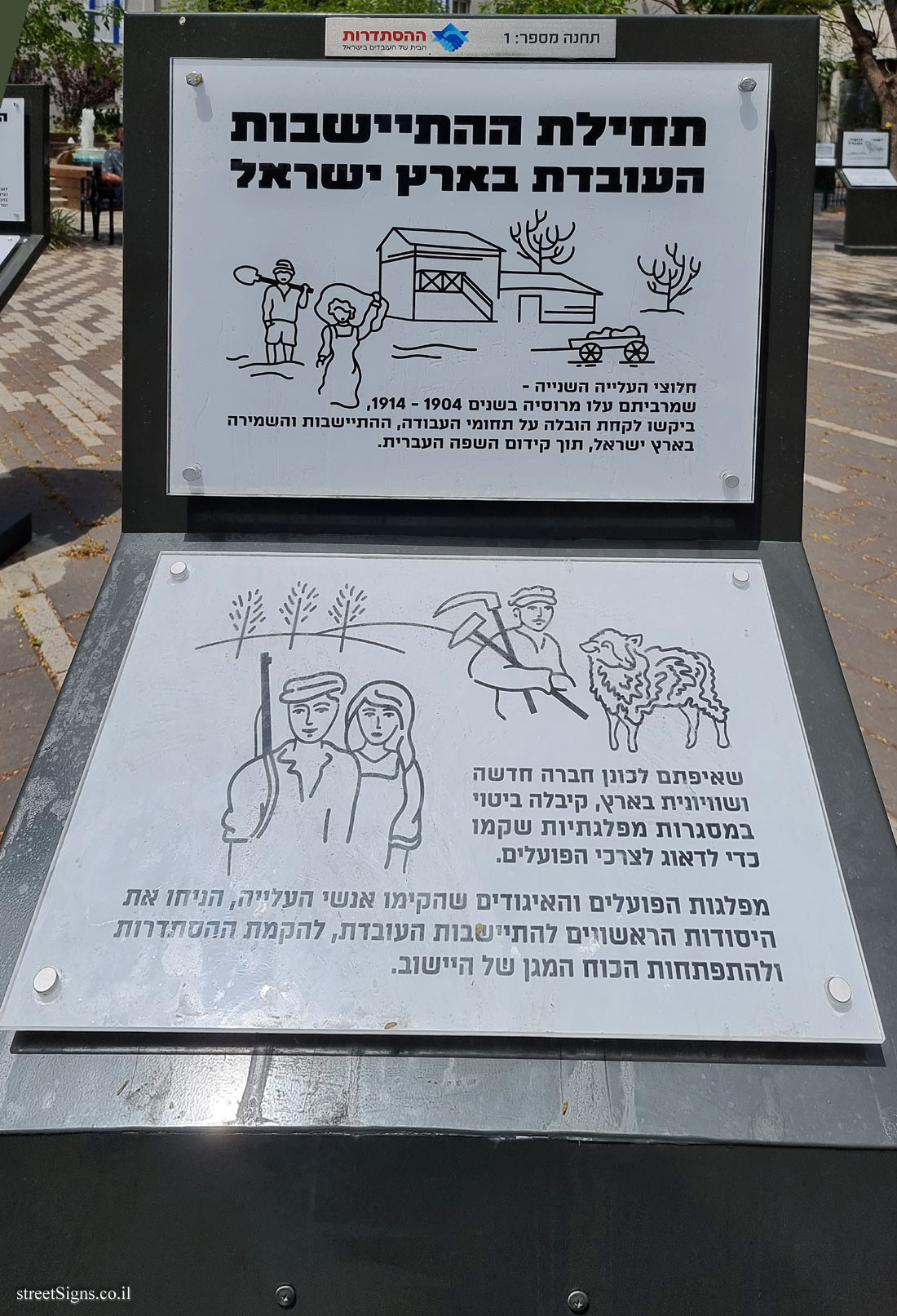One of the stations in the Histadrut Garden in Rishon Lezion, inaugurated in July 2020, with signs marking milestones in the history of the Histadrut.
The illustrations at the trail stations were made by Nofar Tzarfati.
A broad view of some of the stations was taken that day by the same photographer
 Click for a larger image
Click for a larger image Three months later, it was inaugurated in Tel Aviv next to the Histadrut building, the Histadrut Garden, with the Youth Movements Trail, which contains the same signs with the same text and illustrations (but the signs are made of stone and are on the ground)
 Click for sign's details Translation of the text on the sign
Click for sign's details Translation of the text on the sign:
Station number: 1
Symbol of the Histadrut - the home of workers in Israel
Beginning of the working settlement in Eretz Israel The pioneers of the Second Aliyah - most of whom immigrated from Russia in the years 1904-1914, sought to take the lead in the fields of labor, settlement and preservation in the Land of Israel, while promoting the Hebrew language.
Their aspiration to establish a new and egalitarian society in the country was expressed in party frameworks that were established to take care of the needs of the workers.
The workers ’parties and the unions established by the aliyah people laid the first foundations for the workers’ settlement, the establishment of the Histadrut and the development of the protective force of the settlement.
Learn about:


 Click for a larger image
Click for a larger image  Click for sign's details
Click for sign's details